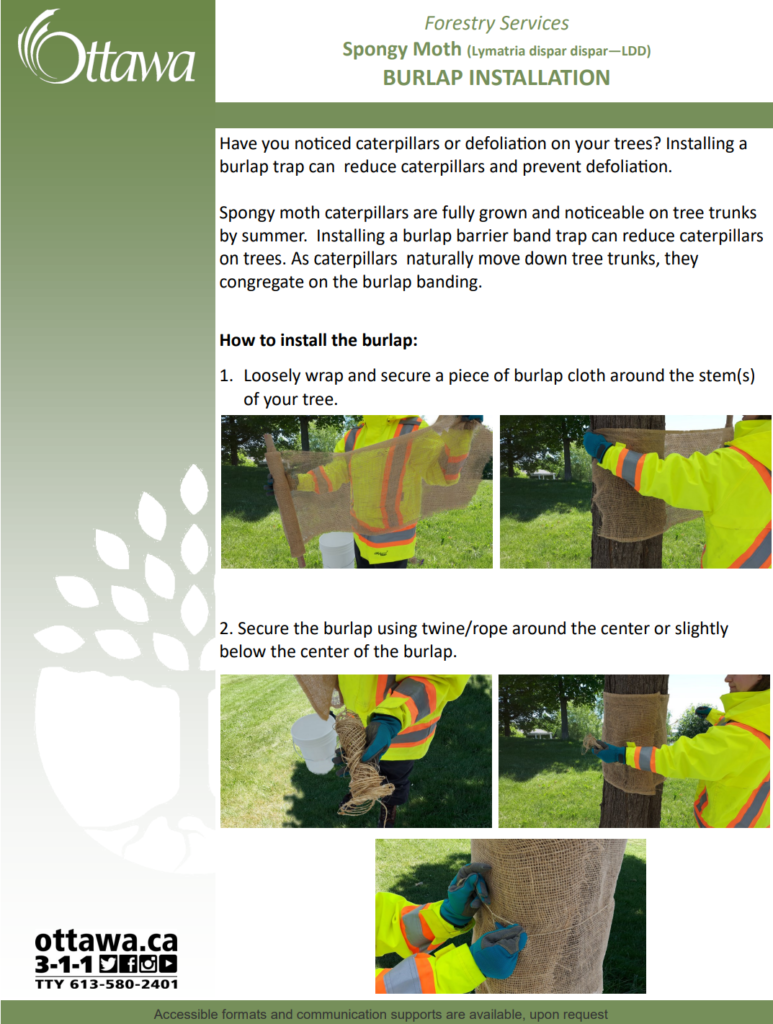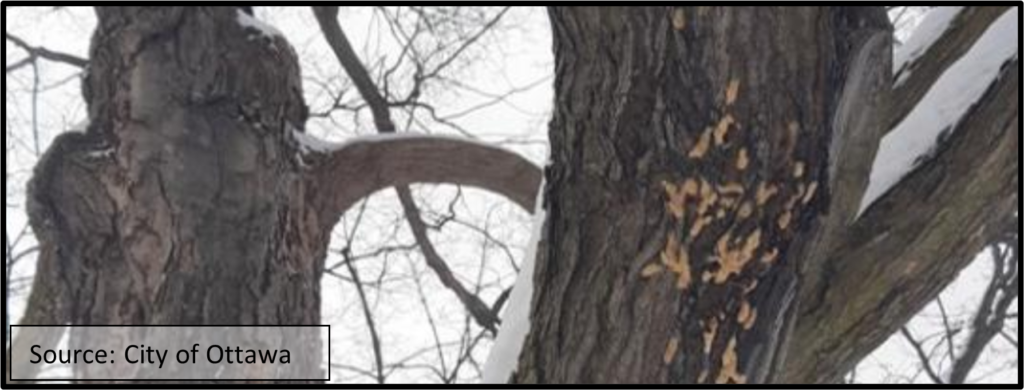UPDATE (2022-04-26): We have received burlap and twine from the City’s Forestry Services to distribute so you can build your own Spongy moth trap (please measure the circumference of your tree(s) so we can cut the length of burlap you require!) A demonstration will be setup at Frank Ryan Park on April 30th or you can follow the City’s instructions here:
 Burlap trap instructions (PDF)
Burlap trap instructions (PDF)QTNca has ordered burlap from the City. Those interested in removing caterpillars from their trees with the use of burlap can come to Frank Ryan Park on April 30th from 9h30am to 11h00am for information.
We expect to have burlap from the City available for free distribution at that time. We are also looking for individuals that could take on the burlap management of distinct trees in public spaces of QTN (e.g., Frank Ryan Park near play structure, oak trees in Connaught Park near bike trails, etc.)
If you are interested in helping or want more information, please contact nature.qtn@gmail.com.
Here is the City’s announcement on this project:
The City of Ottawa’s Forestry Services team is proactively reaching out to request assistance protecting trees in your neighborhood this summer. Trees in your community are likely to be impacted by the Spongy moth (LDD) in 2022.
Spongy moth or Limantra dispar dispar (LDD), formerly known as Gypsy moth, is an invasive forest insect found in Ontario. Recent observations and surveys in the Ottawa area indicate that populations are increasing and that the current outbreak will likely last for two to three years. During severe outbreaks, trees and shrubs may be completely defoliated. Although most trees can produce a new crop of leaves over the summer, repeated defoliation can cause trees to decline. More information on Spongy moth including identification can be found at Ottawa.ca/spongymoth.
The City of Ottawa is carefully monitoring the progress of the outbreak and has developed a multi-faceted Response Plan for the Spongy moth (LDD). This plan includes monitoring, tree protection, communications, and community outreach.
As part of the 2022 Spongy moth response plan, the City is exploring various outreach activities for community groups to assist with mitigating the impacts.
During its caterpillar stage, Spongy moths feed on the leaves of trees causing defoliation. In June and July, burlap can be installed around tree trunks to form a trap where caterpillars congregate. Frequent disposal of the caterpillars from the trap reduces the number of insects feeding on leaves and helps to protect trees from the infestation.
The City is seeking support from community groups to install burlap on trees in City parks in your area. Participating community groups will receive a bundle of material which includes a roll of burlap (300 ft x 4ft / 92m x 1.2m), twine, and instructions on how to install the burlap and dispose of the caterpillars. Community groups are asked to oversee the installation of the burlap with volunteers or may choose to distribute burlap “kits” for residents to install independently. Currently, the City will not be distributing burlap to individual residents.
More information on how to install the burlap will be distributed to your group electronically and will be available on Ottawa.ca this spring. Guiding information on how to prepare individual burlap kits will also be shared.
If you have any questions, please visit our website or send your inquiry to forestryengagementforestier@ottawa.ca
Thank you for your support in protecting our City’s trees!
Regards,
Forestry Services



